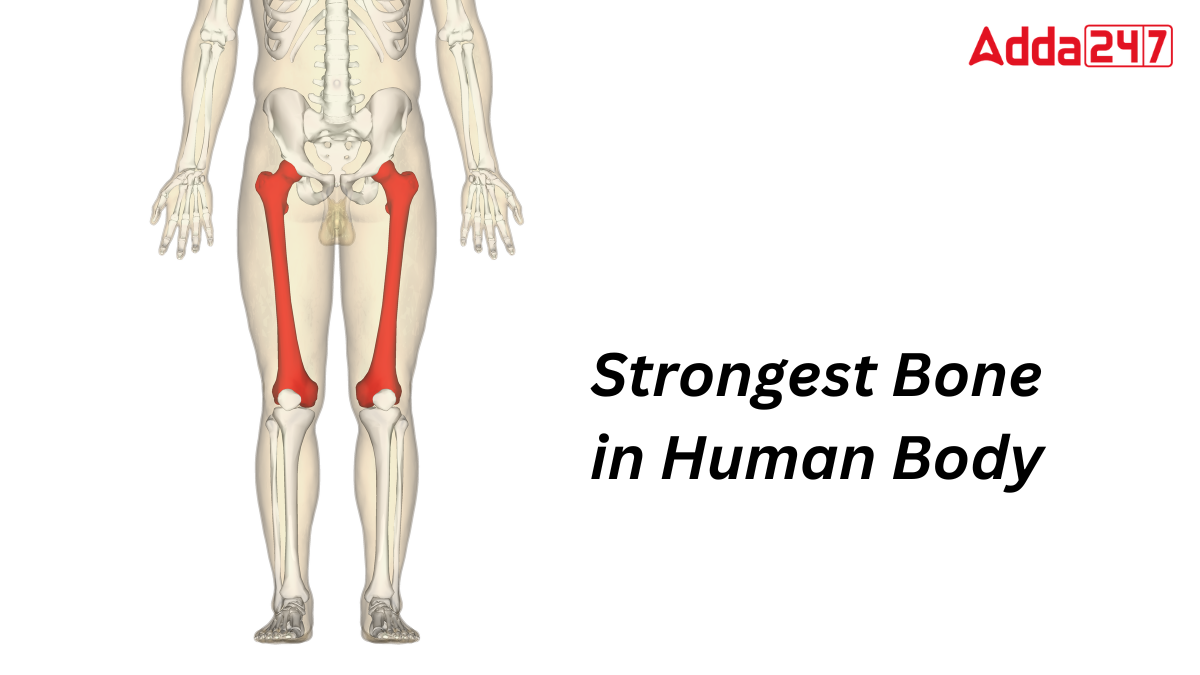The human skeletal system is a marvel of engineering, providing structure, protection, and mobility. Among the 206 bones in the adult human body, the femur stands out as the strongest and longest bone. This article delves into the fascinating characteristics and functions of the femur, exploring why it is considered the strongest bone and its crucial role in our anatomy.
Which is the Strongest Bone in Human Body?
The strongest bone in the human body is the femur, or thighbone. It extends from the hip to the knee, supporting the body’s weight and enabling movement. The femur’s remarkable strength comes from its dense, compact bone structure and cylindrical shape, allowing it to withstand significant force. Its vital functions include providing stability, facilitating locomotion, and protecting essential blood vessels and nerves.
Anatomy of the Femur
The femur, or thighbone, extends from the hip to the knee and is a critical component of the leg. It consists of several parts:
- Head: The rounded, upper part that fits into the hip socket (acetabulum), forming the hip joint.
- Neck: The narrow region just below the head.
- Shaft: The long, straight section of the femur.
- Distal End: The lower end that connects to the knee joint, featuring the medial and lateral condyles.
Composition and Structure of the Femur
The femur’s strength is derived from its composition and structural design:
- Compact Bone: The outer layer of the femur is made up of dense, compact bone that provides rigidity and strength.
- Cancellous Bone: Inside the compact bone is the spongy, cancellous bone that helps absorb shock and reduce the weight of the bone.
- Bone Marrow: The medullary cavity in the shaft contains bone marrow, crucial for producing blood cells.
Why the Femur is the Strongest Bone in Human Body?
Several factors contribute to the femur being the strongest bone in the body:
- Load-Bearing Capacity: The femur supports the weight of the upper body and withstands the forces generated during activities like walking, running, and jumping. It can resist forces up to 2,500 to 3,000 pounds.
- Cross-Sectional Shape: The cylindrical shape of the femur enhances its ability to bear loads without bending or breaking.
- Density and Material Composition: The femur is composed of a high percentage of minerals like calcium and phosphorus, giving it remarkable hardness and resilience.
Functions of the Femur
The femur plays several vital roles in the human body:
- Support and Stability: It forms the central pillar of the leg, providing support and stability for standing and movement.
- Movement and Locomotion: It serves as an attachment site for muscles, enabling a wide range of movements at the hip and knee joints.
- Protection: The femur helps protect the femoral artery and nerves that run along its length.
Common Injuries and Conditions
Despite its strength, the femur is not immune to injury. Common issues include:
- Fractures: High-impact trauma, such as from car accidents or falls, can cause femoral fractures. These are serious injuries requiring prompt medical attention.
- Osteoporosis: A condition where bone density decreases, making bones more susceptible to fractures, can affect the femur.
- Avascular Necrosis: A condition where poor blood supply to the femoral head leads to bone tissue death, often necessitating surgical intervention.




 Which Glacier is the Source of the Brahm...
Which Glacier is the Source of the Brahm...
 Which City of Germany is Known as the Gr...
Which City of Germany is Known as the Gr...
 Which Peak is Known as the Five Treasure...
Which Peak is Known as the Five Treasure...







